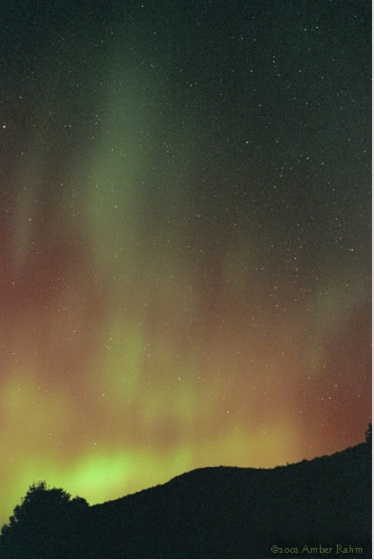Aurora, Vermont, USA
Aurora, Vermont, USA: A Dazzling Display of Natural Phenomenon
Located in the northeastern region of the United States, the state of Vermont is known for its picturesque landscapes and charming small towns. While Vermont is often associated with its stunning fall foliage and snowy winters, it is also a prime location for witnessing the mesmerizing natural phenomenon known as the Aurora Borealis, or the Northern Lights. Aurora sightings in Vermont are a rare and awe-inspiring occurrence that captivate both residents and visitors alike.
The vibrant display of colors seen in the Aurora Borealis is caused by the interaction between charged particles from the Sun and the Earth's magnetic field. During periods of heightened solar activity, such as the maximum of the eleven-year solar cycle, the chances of witnessing an Aurora in Vermont increase significantly. In 2002, shortly after a solar activity peak, a particularly energetic display illuminated the skies above the state.
One of the distinctive features of the Aurora in Vermont is the presence of tall, diffuse columns of green light. These columns, which reach altitudes between 60 and 90 miles, are created by excited oxygen atoms emitting green light. At even higher altitudes, more than 90 miles above the Earth's surface, red emissions from atomic oxygen can also be observed. However, at lower altitudes, these red emissions are quenched by collisions with other gases.
The ethereal beauty of the Aurora is not limited to its colors alone. The ever-changing patterns and movements of the lights add to the enchantment of the spectacle. Dancing across the night sky, the Aurora creates a dynamic display that leaves onlookers in awe. The mesmerizing movements are a result of variations in the Earth's magnetic field and the way charged particles interact with it.
For those fortunate enough to witness an Aurora in Vermont, it is an experience that will be etched in their memories forever. The vast open spaces and minimal light pollution in certain areas of the state make it an ideal location for observing the Northern Lights. Away from the hustle and bustle of city life, individuals can immerse themselves in the tranquility of nature while marveling at this celestial phenomenon.
To increase your chances of witnessing an Aurora in Vermont, it is important to choose the right time and place. Keeping track of solar activity and geomagnetic storms can help predict when the conditions are favorable for an Aurora. Additionally, heading to areas with clear, dark skies away from city lights will provide optimal viewing conditions. Planning a trip to Vermont during the fall or winter months, when the nights are longer and darker, may also enhance your chances of catching a glimpse of this extraordinary spectacle.
Photographers, both amateur and professional, flock to Vermont in hopes of capturing the Aurora's brilliance on camera. The combination of the natural beauty of Vermont's landscapes and the vibrant colors of the Northern Lights creates a captivating subject for photography. Whether you are a seasoned photographer or simply an enthusiast with a smartphone, capturing the Aurora in all its glory can be a rewarding and memorable experience.
In conclusion, Vermont's unique geographical location and serene landscapes make it an ideal destination for witnessing the mesmerizing phenomenon of the Aurora Borealis. The rare occurrence of the Northern Lights in this picturesque state offers a glimpse into the wonders of our universe. From the vibrant colors to the captivating movements, the Aurora in Vermont provides a truly unforgettable experience for those fortunate enough to witness it. So, if you find yourself in Vermont during a period of heightened solar activity, be sure to keep your eyes on the night sky and prepare to be amazed by the dazzling display of nature's magic.

Aurora, Vermont USA
Photographed by Amber Rahm.
This energetic display in 2002 was not long after a maximum in the eleven year cycle of solar activity.
Green emission from excited oxygen atoms forms tall diffuse columns 60 - 90 miles altitude.
Atomic oxygen emissions also formed the reds but these are higher, more than 90 miles above the earth. At lower altitudes the red emissions are quenched by gas collisions.
Note: this article has been automatically converted from the old site and may not appear as intended. You can find the original article here.
Reference Atmospheric Optics
If you use any of the definitions, information, or data presented on Atmospheric Optics, please copy the link or reference below to properly credit us as the reference source. Thank you!
-
<a href="https://atoptics.co.uk/blog/aurora-vermont-usa/">Aurora, Vermont, USA</a>
-
"Aurora, Vermont, USA". Atmospheric Optics. Accessed on December 28, 2024. https://atoptics.co.uk/blog/aurora-vermont-usa/.
-
"Aurora, Vermont, USA". Atmospheric Optics, https://atoptics.co.uk/blog/aurora-vermont-usa/. Accessed 28 December, 2024
-
Aurora, Vermont, USA. Atmospheric Optics. Retrieved from https://atoptics.co.uk/blog/aurora-vermont-usa/.